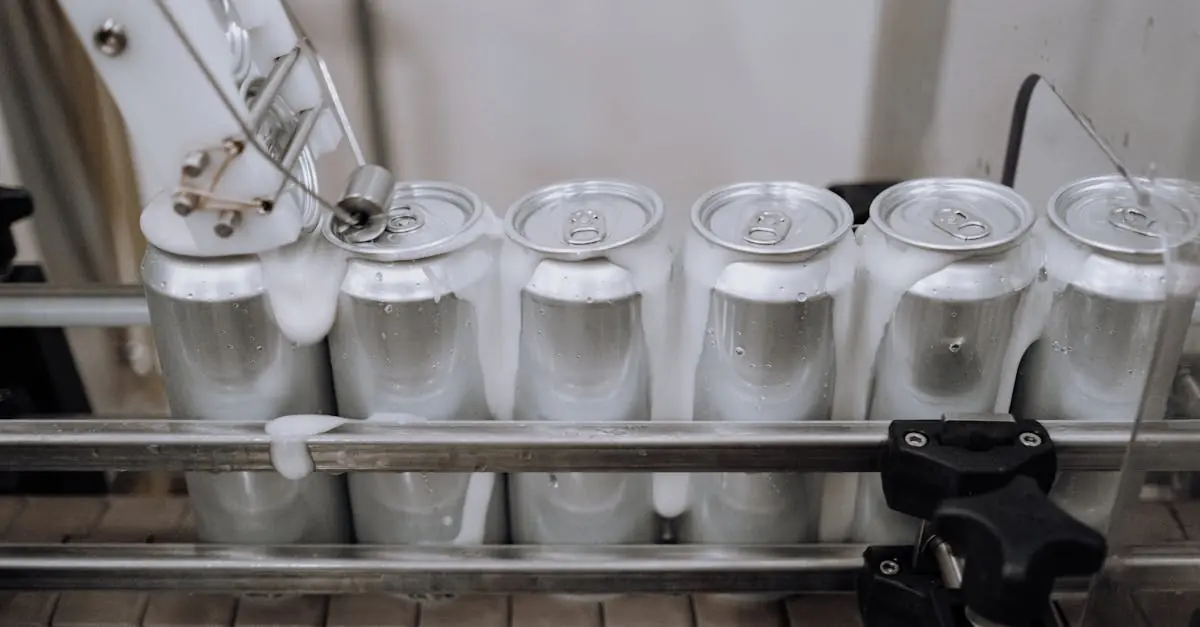In a world where insurance claims can feel as complicated as deciphering ancient hieroglyphs, robotics process automation (RPA) swoops in like a superhero in a cape. Imagine a virtual assistant that doesn’t need coffee breaks, doesn’t lose paperwork, and can process claims faster than you can say “premium increase.” That’s RPA for you.
As the insurance industry navigates the digital age, RPA is transforming how companies operate, making processes smoother and more efficient. It’s not just about saving time; it’s about freeing up human talent to tackle more complex problems while the robots handle the mundane. So buckle up as we dive into how RPA is revolutionizing the insurance landscape, one automated task at a time. Who knew that robots could be so helpful—and so entertaining?
Table of Contents
ToggleOverview of Robotics Process Automation in Insurance
Robotic process automation (RPA) significantly impacts insurance operations. Automation eliminates repetitive tasks in areas such as policy administration, underwriting, and claim processing. Implementing RPA reduces human error and enhances processing speed, which leads to quicker response times for customers.
Claim processing demonstrates RPA’s capabilities effectively. Automated systems extract data from claim applications, validate it against existing policies, and route them for further analysis, minimizing delays. Another example involves policy issuance, where RPA swiftly generates documents, streamlining onboarding and ensuring compliance.
Operational efficiency improves as RPA frees up human employees from mundane tasks. While employees can then concentrate on more complex issues, customer service agents focus on client interactions, resulting in enhanced customer satisfaction. Additionally, RPA consistently handles high volumes of transactions, enabling insurers to scale operations without increasing labor costs.
Cost savings represent another significant advantage. Insurance companies reduce overhead by automating tasks traditionally performed by staff. Investing in RPA solutions leads to long-term savings, which can be allocated to innovation and improving services.
Data analytics benefits from RPA as well. Automated processes generate vast amounts of data, providing insights into customer behavior and process efficiency. Insurers can leverage these insights to tailor products and address customer needs proactively.
RPA revolutionizes the insurance sector by streamlining operations, enhancing customer experiences, and optimizing resources. The focus on automation not only improves accuracy but also drives continued growth and competitiveness in the industry.
Benefits of Robotics Process Automation
Robotics process automation (RPA) offers significant advantages in the insurance industry. Enhanced performance leads to remarkable improvements in operations, making firms more competitive.
Increased Efficiency
Increased efficiency characterizes RPA’s impact on insurance processes. Tasks that previously consumed valuable time now complete swiftly, resulting in rapid claim resolutions. Automated systems handle data extraction, validation, and routing seamlessly. Human staff can shift their focus from repetitive assignments to more complex problem-solving activities. This transition enhances operational workflows, allowing companies to meet customer demands quicker and more accurately. Clear procedures established through automation contribute to consistent results.
Cost Savings
Cost savings represent another core benefit of RPA in the insurance sector. Automating routine functions eliminates the need for extensive manpower, leading to reduced labor expenses. Insurance companies can allocate resources more effectively, directing funds toward innovation and service enhancements. Statistically, firms experience operational costs decreasing by approximately 30% after implementing RPA solutions. These savings help improve overall profitability and support investments in technology and training. Enhanced data analysis from automated systems also informs decision-making, further optimizing expenditures.
Challenges in Implementing Robotics Process Automation
Implementing robotics process automation in the insurance sector presents various challenges that companies need to navigate.
Integration with Legacy Systems
Integrating RPA with existing legacy systems remains a significant hurdle for many insurance firms. Many legacy systems lack the flexibility to support automation technologies efficiently. Insurers often face compatibility issues when attempting to combine new RPA tools with outdated software. Frequent updates may be necessary to ensure seamless communication between systems, increasing project complexity. The solution requires thorough planning and investment in software that can bridge the gap between old and new technologies. As a result, successful integration reduces process friction and improves automation outcomes.
Change Management
Change management emerges as a critical challenge during RPA implementation. Many employees may resist the transition to automation due to concerns about job security or reluctance to adopt new technologies. Effective training programs play a vital role in easing these apprehensions, allowing staff to understand the benefits of RPA. Insurers must engage employees through communication and collaboration, fostering a culture that embraces innovation. Additionally, stakeholders need to clearly define the roles of both RPA and human workers in the new landscape. This approach helps ensure that changes are accepted and integrated smoothly into existing workflows.
Case Studies of Robotics Process Automation in Insurance
Robotics process automation (RPA) has showcased its transformative capabilities through several real-world applications in the insurance industry. These case studies highlight both successful implementations and valuable lessons learned.
Successful Implementations
Leading insurance companies have adopted RPA to revolutionize their operations. For instance, a major insurer automated claims processing, achieving a 50% reduction in turnaround time. Implementing RPA allowed the company to extract, validate, and route data efficiently, improving accuracy while minimizing human intervention. Another insurer streamlined policy issuance by automating document generation, which not only ensured compliance but also increased operational efficiency. Customer service representatives redirected their focus to client interactions, enhancing overall satisfaction. These examples illustrate RPA’s potential to boost speed, accuracy, and customer engagement across various insurance functions.
Lessons Learned
Insurance firms learned critical lessons while integrating RPA into their operations. Change management emerged as a significant challenge; employees often voiced concerns about job security with automation’s rise. Addressing these worries required comprehensive training and clear communication about RPA’s role as a support tool rather than a replacement. Another insight involved overcoming legacy system limitations; many organizations faced compatibility issues that hindered smooth RPA integration. Effective planning and investment in bridging technology proved essential to navigate these challenges. These lessons underscore the importance of proactive strategies in successfully implementing RPA within the insurance sector.
Future Trends in Robotics Process Automation
Robotics Process Automation continues to evolve, shaping the insurance industry’s future. Emerging technologies play a crucial role in transforming automation practices and enhancing operational efficiencies.
Emerging Technologies
Artificial intelligence and machine learning increasingly integrate with RPA, driving sophisticated automation solutions. These technologies empower RPA systems to learn from data patterns, enabling predictive analytics and smarter decision-making. Chatbots also enhance customer interactions by handling inquiries efficiently, while natural language processing aids in understanding complex policy language. Cloud computing allows for scalable RPA solutions, providing insurers with flexibility and reduced costs. Enhancements in data analytics further support insurers in optimizing processes, leading to improved customer experiences.
Impact on Workforce
The workforce will undergo significant changes due to RPA integration. Job roles may shift, emphasizing tasks that require human judgment and creativity, such as critical thinking and relationship-building. Employees will transition from mundane tasks to more strategic and analytical positions within organizations. Upskilling and reskilling opportunities will become vital to ensure employees are prepared for the evolving landscape. Companies focusing on employee engagement and embracing RPA will likely foster a culture of adaptability and innovation. This shift ultimately leads to a more productive work environment, increasing job satisfaction and organizational efficiency.
Robotic process automation is reshaping the insurance industry by enhancing efficiency and customer satisfaction. By automating repetitive tasks insurers can focus on strategic initiatives and improve service delivery. The integration of RPA not only reduces operational costs but also supports innovation through valuable data insights.
As the industry evolves embracing emerging technologies like AI and machine learning will further amplify the benefits of RPA. While challenges such as legacy system compatibility and change management exist addressing these issues will pave the way for a more streamlined future. Overall the adoption of RPA positions insurance companies to thrive in a competitive landscape while meeting the ever-changing needs of their customers.



